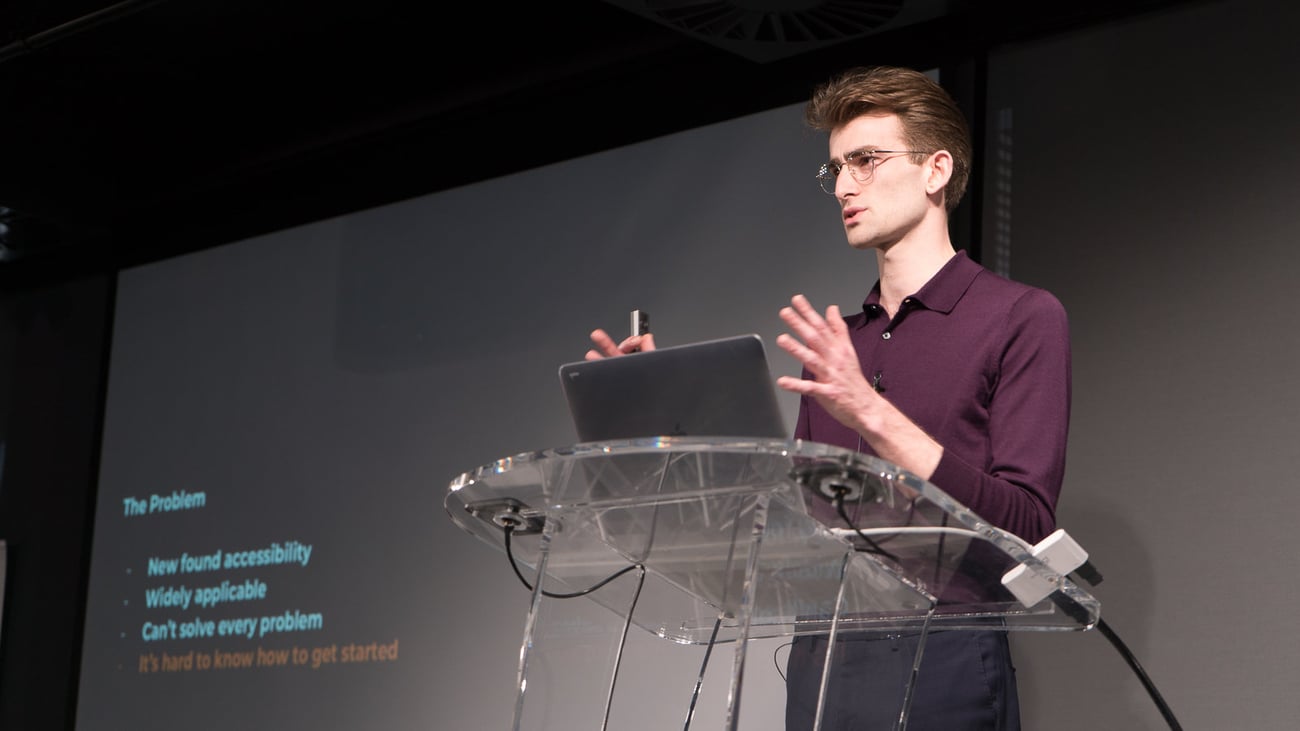Inside the confines of Spacetime: A young artificial intelligence company with big plans for the future

Central to the creation of Spacetime is Catt’s precocious business portfolio. During his degree in design thinking and business at AUT, Catt was quick to set up his own ventures on the side. A string of businesses followed: The Lucid Collective, a New Zealand made fashion label, What’s Good Blog, an online publishing platform for running events, Tips, a digital marketing company that focuses on websites, social media marketing and campaigns – and later, Olly, a part-time cafe, part time art studio placed in Mount Eden, set up alongside Chlöe Swarbrick and Bryan Anderson.
Then mid-last year, with software and business close to hs chest, he saw the value in AI through big tech players such as IBM, Google, Microsoft, and Amazon and sought to take the software into the New Zealand market.
Catt says, “When you take this suite of technologies and apply them to the problems currently faced by people and business, there is a huge opportunity to improve both the way people interact with companies and the way organisations can deliver products and services.”

The application of newly accessible cognitive technologies that enable machines to do tasks like humans – and often better than humans – coupled with the commitment to design thinking and solving human-centred problems saw the creation of Spacetime.
Currently, the company is working in financial services, healthcare, and education, such as SeniorNet – a not for profit organisation that teaches technology to the elderly – alongside a bunch of other incumbent Kiwi businesses across industries. He links his work with the education industry as an example of what Spacetime does, “The problem here is easy access to education. Some people aren’t digital natives, and the benefits of the internet and other technologies aren’t accessible.
“With conversational AI, like chatbots, we can design an experience where users are guided to their desired outcome. When teaching seniors to use technology, we can design the bots conversations and actions in advance. This allows a more intuitive experience for the user in which we emulate a personal teaching experience at scale.”

Despite the industry being fairly under-developed in New Zealand, AI is set to spread across industries with pace. Research suggests it is set to increase GDP by $54 billion by 2035 across 18 different industries. Additionally, some 140 organisations have begun working with or investing in AI here already. But while development in software sees keen new businesses emerge, many struggle to understand the value of artificial intelligence. So, what exactly are the benefits for businesses who use AI services?
Spacetime targets three fields of opportunity: gaining increased customer insight, improving interactions, and automating business processes. Catt rattles through each of these in quick succession – you can gain increased insight into the customer with technologies such as IBM’s Personality Insights allowing the company to look at customers on a personal level as opposed to traditional methods like demographic segmentation or profiling. Another is improving interactions through virtual assistants, chatbots, or speech synthesis, which improves how people interact with digital platforms in both a business or government context. And lastly, automating business processes with robotics in which human work can be simulated effectively using technology.
It must be said that while technology holds promise, it’s an industry freighted with risk. Outspoken technocrats have vetted dark times ahead, earlier this year Elon Musk stated: AI is ‘far more dangerous than nukes’ – thoughts echoed by fellow brainiacs Stephen Hawking and Bill Gates, who suggested AI could threaten humanity. Risk is further heightened by stories such as The New Yorker’s The Doomsday Invention that declared through the development of AI humans may have engineered their own extinction.
So, while some see maximum efficiency ahead, others fear of death and destruction. But like many shiny new technologies, short term effects appear to lie in more menial matters. One being, if a swathe of automation begins to take jobs – especially in low socio-economic areas where a large chunk of the population work in administrative jobs that are typically easier to replace – how can we redistribute work effectively?
Catt says, “We have witnessed a lot of technological disruption across industries and the fear of job loss is a very real concern. The trouble is predicting exactly where and when that disruption will take place. We don’t really know which jobs are going to be consumed by automation. The reality is, the problems we will face in the near term from the use of AI differs widely from the problems discussed in the media. The key is being specific about what AI means and how it is actually being used today.”
Asked what plans are in store for Spacetime, Catt says, “Over the next few years we will continue to use Spacetime as a vehicle for understanding how technology can be best applied to the problems faced by Kiwi businesses.”




